Archive for the 'Almond' Category
After letting the almonds that I harvested a few weeks ago dry in the sun for a week, I spent about an hour removing the shells from each of them. I hit each almond with a meat pounder to break the shells and then removed the almond nuts inside. The almond nuts were about half the size of almonds that are typically sold commercially. I then dry roasted our almonds in an oven on a cookie sheet (without any oil or salt) for about 30 minutes at 325 degrees F.
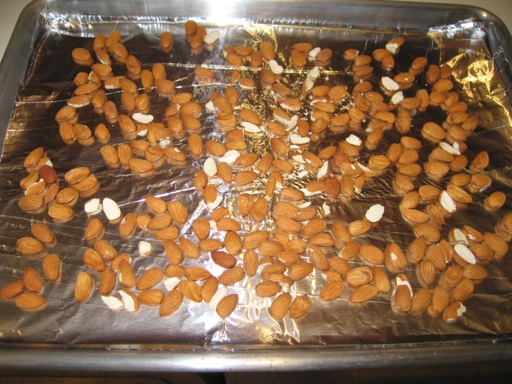
I am very impressed with the flavor of our home grown almonds. Our home grown almonds, although small, are much tastier than other almonds I have eaten in recent memory. Our home grown almonds have a great nutty flavor that lingers in the mouth. It’s a flavor that I don’t think I’ve ever tasted in almonds before. They are very flavorful even without salt or some other seasoning. Based on this first crop, I think that almonds are well worth growing at home, just to get to taste their full flavor. Although, it is a lot of work netting the tree, harvesting the almonds, hulling each almond, and then removing the shell from each almond.
I was concerned when I planted this tree that our summers would not be hot enough to get the almonds to ripen properly. But apparently, at least this variety (Garden Prince) produces great tasting almonds in a climate having warm summers, but not hot summers. Although, I doubt that any almonds would ripen properly close to the California coast where they would be exposed to fog and cold all summer. However, the foggy nights that we get in our area probably contributed to mold and mildew that formed on many of the almond shells. Fortunately, all of the almonds nuts inside the shells were completely free of mold and mildew.
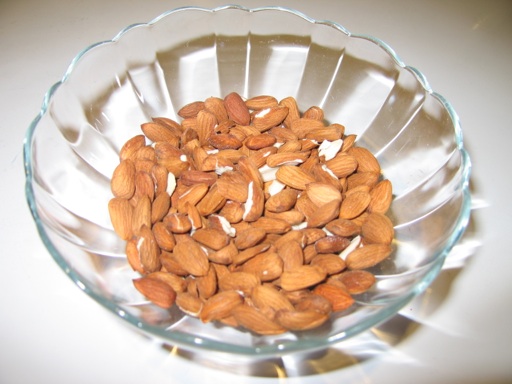
October 03 2013 | Almond | Comments Off on Almond Update
This weekend, I harvested all of the almonds on our Graden Prince almond tree. I picked them by hand, rather than shake the tree, because the tree is only 5 feet tall, and it only had about 200 almonds on it. Here’s what the tree looked like before the harvest:
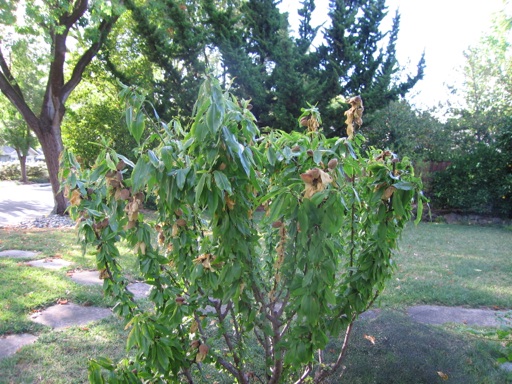
Each almond grows inside a hard shell and a soft hull. After picking each almond, I removed the soft hull, which is the first layer. I may have waited too late to harvest them, because many of the almond shells have white mildew on them. However, I have cracked a few of the shells open already, and the almonds inside appear to be free of mold and mildew.
After the harvest, I placed the almonds in their hard shells onto a cookie sheet to dry in the sun for a few days. I am covering the cookie sheet with netting in the daytime and bringing it inside at night to prevent them from being eaten by birds and squirrels. After the drying process, I will remove the almonds from their shells and then roast them in the oven.
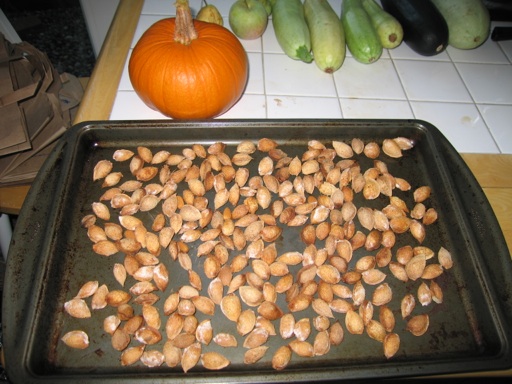
That’s a sugar pie pumpkin in the background of the above picture that I grew in our yard this summer and just harvested this weekend. I roasted it and made pumpkin soup with it, which turned out very well. We also roast and eat the pumpkin seeds.
Below is a photo of a spaghetti squash that was also grown in our yard this year and just harvested. Winter squash has turned out to be very easy to grow in our yard. I just planted the seeds directly into the ground in the spring (some I planted in pots and then transplanted) and kept the plants watered through summer (watering nearly everyday with an automatic microspray system). I didn’t fertilize them or spray them. Six months later, almost every vine has at least one large squash.
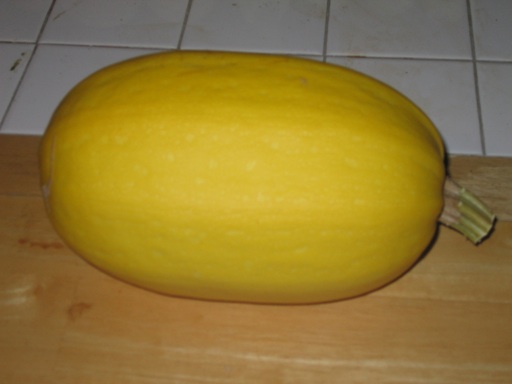
I’ve received some comments asking how my kiwifruit plants are doing. Below is a picture of them. The male plant is on the left and the female plant is on the right. They are both growing vigorously along our back fence, producing lots of long vines and leaves. I have to prune them 3-4 times a year to keep them to a reasonable size. However, neither plant has produced a single bloom, and the female plant has not produced a single fruit yet. I’m not sure why. Perhaps they are still not mature enough. They are both 4 years old.
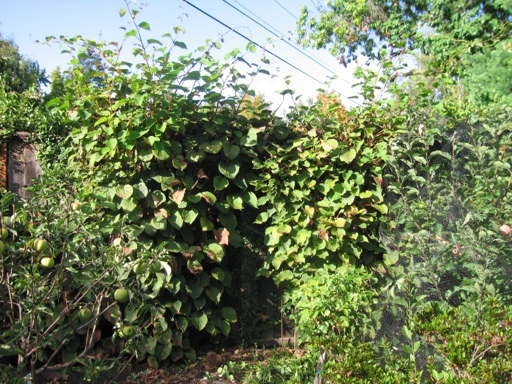
September 22 2013 | Almond and Kiwifruit and Squash | Comments Off on Almond and Squash Harvest
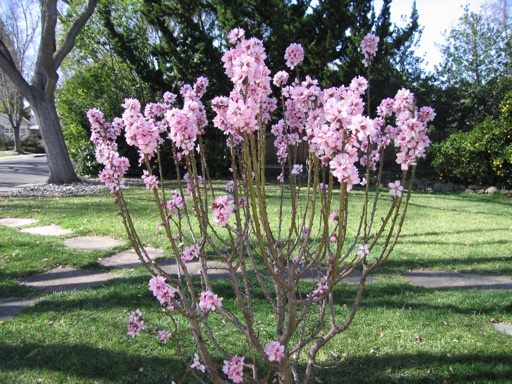
Our Garden Prince dwarf almond tree is in full bloom for the first time. I planted it about 4 years ago. Although it had about a dozen blossoms last February, and even less two years ago, this is the first year that it has been full of blossoms. Garden Prince is a self-fruitful variety, meaning it doesn’t need another variety of almond tree growing nearby to cross-pollinate with in order to set nuts.
Our tree hasn’t set any nuts yet, but I am hopeful that it will set nuts this year. I have never seen almond trees grown in the bay area, at least that I can identify. Although their leaves look very much like peach tree leaves, so they’re hard to spot. I planted this almond tree as an experiment to see if it would set nuts here, and if any nuts that it did set would ripen in our mild summers. I know that almonds usually need hot summers to ripen properly.
We have had more than enough chill hours this winter for almonds. According to the UC David research center, inland parts of the bay area have received between about 900 and 1000 hours below 45 degrees so far this winter (California Chill Hours). The Garden Prince variety is listed as needing only 250 chill hours according to Dave Wilson Nursery.
In any event, even if the nuts it sets are not edible, this almond tree makes a nice landscape plant. It was the first tree to bloom in our yard this year just after Valentines day, and its pink blossoms clustered at the ends of its upright branches are very attractive.
February 24 2013 | Almond | Comments Off on Almond Tree Blooming






